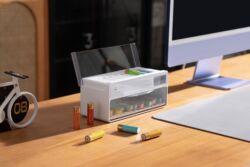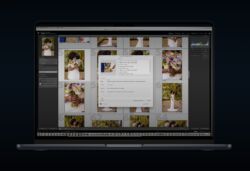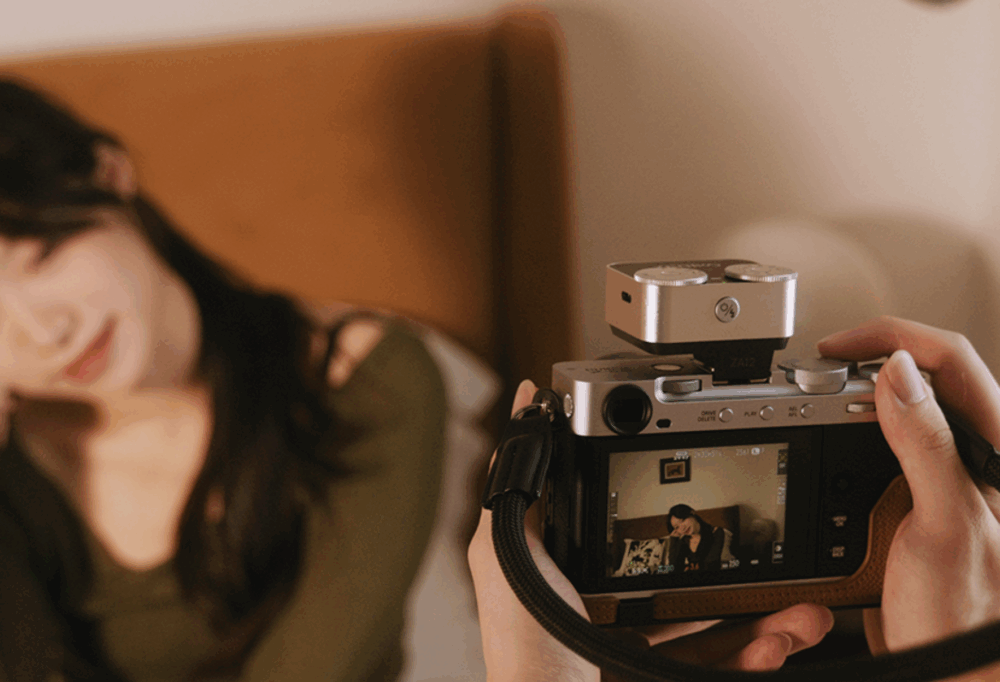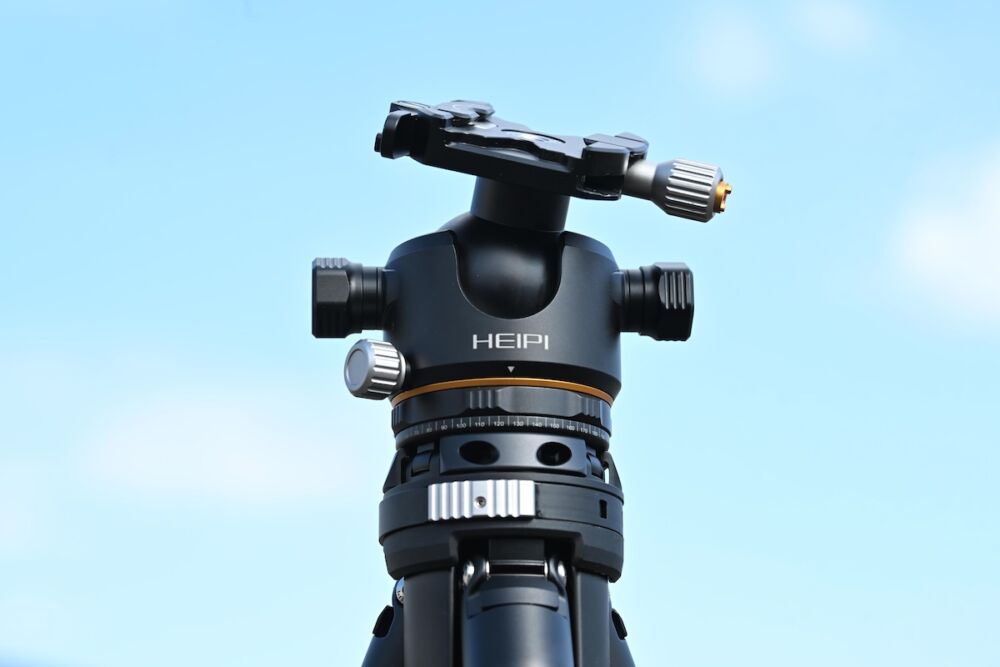If you’re into landscape photography, and especially if you shoot video or do time-lapse photography, then you probably know how important specialized filters can be to your work. Sometimes, a single screw-in ND filter just isn’t enough!
This is where multi-filter systems come in, allowing you to use two or three filters at the same time, as well as adjust the darkening of just half or part of your image using graduated filters.
PolarPro, known for its high-quality drone filter systems and their QuartzLine camera (threaded) filters, has just launched its next filter system, the Summit Landscape Kit. With the Summit system, PolarPro joins the rather elite group of filter systems that offer graduated (square) ND filters!
 30 sec, f/10, ISO 64, 14mm
30 sec, f/10, ISO 64, 14mm
Summit Filter System Used: CPL, 2-stop GND, 10-stop ND
Nikon Z7, Nikon Z 14-30mm f/4 S
The Landscape kit consists of a holder with space for three types of filters- a circular polarizer, a solid ND (neutral density) filter, and a graduated ND (GND) filter. Each filter has its own place in the holder, making operation straightforward and intuitive.

This article and video are sponsored by Polarpro. They sent us a Summit Landscape kit prior to this press release, so that we could give it a thorough test and give our honest feedback. In the video, and additional report below, you can read our own candid opinion about the system.
I’ve been a landscape photographer for 15+ years, and have used many different types of square filter systems. If you are a landscape photographer, a filmmaker, and/or a timelapse photographer, you should know about such specialty filter kits, whether for managing highlights, achieving a slower shutter speed or aperture for video, or doing long exposure photography.
Click here for more information about the PolarPro Summit Filter System and the Landscape Kit.
Watch The Video
Polar Pro Summit Landscape Kit | Specifications
Filter System Size: 105mm
Filter Thread Size: 67mm, 72mm, 77mm, 82mm, 95mm
Filter Glass: Fused Quartz Glass, (CPL, ND, GND) 16-layer coatings
Square Filter Design: Aluminum frame & holding tab, labeled (both EV stops and ND rating)
Includes: 1 “core”, thread adapter, rubber hood, 1 CPL, 1 soft 2-top GND, 1 solid 6-stop ND
Accessories: Rubber hood, carrying case, (for core, and each filter separately, lens cloth(s)
Optional: 3-stop soft GND, 10-stop solid ND, 16.7-stop solid ND
Pricing: $699 ($599 for 1 week after announcement!) Additional filters: $249
Polar Pro Summit Landscape Kit | Key Advantages
When first using this filter system, I immediately got comfortable working with three filters at once. This is, quite honestly, a reaction that I’ve never had to other filter kits. They were always a bit cumbersome to use, and I’ve had a few moments of genuine frustration from missing (or messing up) a shot.
Each filter has its own specific spot in the holder. The circular polarizer goes in a smoothly spinning mount in the rear of the filter system, and is easy to rotate from either side with its knurled outer grip.

The two slots for square filters have dedicated locking knobs; the rear filter slot is for solid ND filters and locks with the lower of the two locking knobs. The front filter slot is for graduated ND filters, and locks with the upper of the two locking knobs.

Each of the square filters has both a metal frame all around the filter, and a file folder style tab for easy use. (Without getting your fingerprints on the filter glass!) All together, this makes the system extremely simple to operate, and generally more user-friendly. For example, you can’t accidentally push either of the square filters out the bottom of their slots, because they have hard bump-stops to keep them from going below their lowest setting.

Thanks to the durability of the metal-framed square filters and their locking screws, the whole setup can be transported with all three filters left in the holder, ready to be mounted to their threaded lens adapter. This means you can be ready to shoot in literally one minute or less!


The Landscape kit also includes a rubber hood, which you can use if you’re ever shooting in harsher conditions and/or if you’d just like to keep a rubber bumper around all of that glass and metal.
With or without the hood, the durability of the holder and filters is impressive. While metal framed filters are not a foreign concept in the realm of cinema, most still photographers using modern digital full-frame and APS-C etc. cameras are likely used to seeing square filters that are nothing but glass. They’re prone to fingerprints around the edges of the filters, and if you drop one, you better hope it’s in the grass or soft earth, and not on a rock or pavement! (I clumsily dropped a square filter off a cliff once. It did not survive.)
The Landscape kit includes all three of the filters, with the solid ND being a 6-stop (ND64) filter, and the graduated ND being a 2-stop (ND-4) soft-edge GND. There are also 10-stop and 16.7-stop solid ND filters, as well as a 3-stop GND, which are available as additional filters.
 30 sec, f/10, ISO 64, 14mm
30 sec, f/10, ISO 64, 14mm
Summit Filter System Used: CPL, 3-stop GND, 10-stop ND
Nikon Z7, Nikon Z 14-30mm f/4
Of course, you might be asking, why should you use a GND filter to hold highlights back in a scene, if it is easy to capture a bracketed HDR image? Indeed, that is a good point, and in some still photography situations, maybe a bracketed sequence is a better choice. In the above image, you can see that the GND filter did cause some shadowing on the rocks on the right.
However, in some situations, you simply don’t have the option to bracket exposures, such as when shooting video or timelapse. (You can see plenty of examples in the video above!)
New Ultra-Wide Lens Compatibility

By the way, we also had a chance to test this filter system out on some of the newest ultra-wide full-frame mirrorless lenses that just hit the market in recent months! PolarPro states that they promise the Summit system will work as wide as 17mm, and maybe some lenses that go to 16mm may have vignetting, HOWEVER, we’ve gotten good results from the Nikon Z 14-30mm f/4 S as wide as 14mm without the GND (front) filter on, (and stopped down; wide-open there is shadowing) …or at 14.5-15mm with the GND filter.
We also tested the brand-new Canon RF 15-35mm f/2.8 L IS, and found that once again we could shoot (stopped-down) at 15mm with no vignetting and without the GND filter, or at 15.5-16mm with the GND filter.

For a 105mm filter system, this is pretty unprecedented! Usually, you would need the massive, clamp-on 150mm filter systems to go this wide, on the lenses that have a fixed hood instead of front filter threads. For this reason alone, I’d absolutely love to have this Summit kit on the Nikon Z 14-30mm f/4 S in particular; it makes landscape photography significantly more compact and portable…
Polar Pro Summit Landscape Kit | Drawbacks
Considering the overall quality of the whole system, including both its physical durability and image quality, plus the innovative design that makes operating three filters so easy, it’s not easy to find “problems” with the Summit filter kit.

If anything, all the metal in the holder and filters that makes it so durable, also (of course) makes it quite a bit heavier than other square filter kits, and certainly much more so than having just two or three regular threaded filters.
So, I must admit, even as a landscape and timelapse photographer, I’m not going to carry a whole square filter system up every single mountain that I climb. There will be plenty of adventures where I will get by with a couple of ordinary 82mm filters. When your backpack hits 40 or 50 lbs, you can’t bring everything.

Even if the weight isn’t too bad, the kit can also take up quite a bit of space, especially once you add an additional filter or two to the main carrying pouch. Each filter pouch is rather thick with its padding, and combining loose filters in a single pouch might result in one getting scratched by the metal frame of the other; maybe they’ll add a divider or two to their individual filter pouches.
The only other thing that comes to mind, again, is something to do with what makes the system so easy and intuitive in the first place- With this system, you don’t just have three open filter holders, so you can’t really combine two GND filters, although technically you could still combine two standard ND filters if you really wanted. Since digital cameras these days have such great dynamic range, (and since I’m not really a fan of hard-edge GND filters, anyway) I don’t think this will be a serious drawback for most photographers.
Having said all that, the bottom line is that despite any drawbacks, it’s still the only square filter system that I would reach for when I know I’ll be shooting a scene that really requires such a specialty tool. Indeed, it is quite a specialty tool, and you’re likely to want to own a standard threaded filter, (whether a polarizer, ND, ND-PL, or variable ND) …before you invest in one of these high-end filter systems.
Long Exposure Tutorial | The ISO 6400 Trick
If you’re wondering how people get those crazy-cool photos of extreme motion blur in broad daylight, then you’re probably going to want to know more about ND and GND filters. To create an ultra-long exposure in broad daylight, and capture something like the clouds moving through the sky, you’ll need a very, very dark ND filter, and a GND filter often helps too depending on the scene.
If you’ve got a 13 or 16-stop ND filter, that’s half the battle! Such a dark filter allows your shutter speed to get into the seconds or even minutes, when shooting at a low ISO and a high (small) aperture.
Frame your image and set your focus before you put on the super-dark ND filter. Then, with the ND filter in place, set your camera to the ideal aperture, and ISO 6400. Depending on how dark your filter is, and what the ambient light is like, you’ll probably end up with a 1, 2, or 4-second exposure.
The trick is, if you change your ISO from 6400 to 100, you can change your shutter speed from 1 sec to 1 min, and it will be the same exposure value. (That’s the beauty of the exposure triangle!) Or, if you needed a 2 or 4-second exposure, then use a 2 or 4-minute exposure at ISO 100.
 4 sec, f/10, ISO 6400 (Test Exposure)
4 sec, f/10, ISO 6400 (Test Exposure)
 4-minute exposure, f/10, ISO 100
4-minute exposure, f/10, ISO 100
Summit Filter System Used: CPL, 2-stop GND, 16.7-stop ND
Canon EOS RP, Canon RF 24-70mm f/2.8 L IS
Pricing & Availability
 10-minute exposure, f/10, ISO 100
10-minute exposure, f/10, ISO 100
Summit Filter System Used: CPL, 3-stop GND, 16.7-stop ND
Canon EOS RP, Canon RF 15-35mm f/2.8 L IS
Some square filter kits can easily cost well over $1,000, so it was a pleasant surprise when Polar Pro told us that the whole kit, including four filters, will be just $599 for the initial launch week, and then $699 after that.
Considering how many filters are included in the kit, and the professional quality, that’s a very competitive price. As mentioned before, they do have additional filters available; with the square ND/GND filters at $249 and the CPL at $149. You can also purchase the holder (core) for $299. Click here to visit the PolarPro Summit System page.













